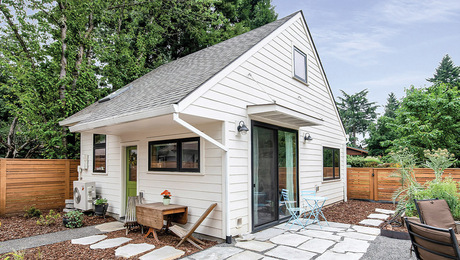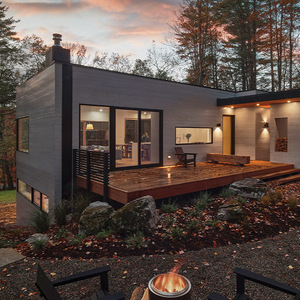Here in Wichita we’ve had about 15 inches of rain this month.
It rained 9-10 inches in the last week
Many homes have basements.
Many people a basement for shelter when bad weather hits and we have a tornados.
Right now There are basements that are leaking that have never leaked in the past due to the excessive rainfall we’ve had.
Yesterday I talked to a structural engineer and he gave me a lot of good info.
He was called to look at a house I sold in which the Buyer bought the home, the basement had a major leak, and he is now pursuing litigation.
Most people assume roof gutters and downspouts and dirt around the foundation will prevent leaky basement.
This is true for light or moderate rain.
But IT WILL NOT STOP THE WATER when we have heavy rains.
When you have a heavy rain it hits the side of the house and it cannot be diverted away just with the dirt around the foundation.
The water runs down the outside of the basement walls and then it enters the basement through cracks in the wall, cracks in the floor, or where the slab floor meets the walls.
Newer homes have french drain around the foundation which drains into a sump pit and gets pumped away.
Older homes don’t have french drain around the foundation and so they leak.
How do you fix a leaky basement in an older home?
His preference was to dig around the outside of the perimeter and install french drain.
But this is very expensive and cost prohibitive so it’s rarely done.
Plan B is to call in a Basement Contractor and have them cut out a gutter in the concrete slab floor around the outside perimeter of the floor.
They cut out the concrete and install a drainage gutter and one or more sump pumps
The Basement Copany GUARANTEEs the basement will not leak.
Couple of other points.
When you put dirt around a house to give it positive drainage, you MUST use soil which is the same and compatible
For example if the soil is clay use clay and don’t use top soil which has a lot of sand as they don’t bond together well and the water will flow back toward the house at the seam where the two soils meet.
Another problem people have is soil between the house and a sidewalk or a patio
They plant flowers there.
This is going to result in water entering the basement.
You should Fill it in with either concrete or brick and it needs to slope away
Another thing we talked about is regrading the yard.
We have a lot of homes where there is little or no slope to get the water away and sometimes people will remove 4-5 inches of soil from the yard to get the desired slope.
He said this is not an option if there are trees in the yard (due to tree roots)
Leaking basements are a tremendous problem around here especially when someone have devoted a lot of money toward finishing the basement.
If your basement gets wet you have to dry it out quickly or you’ll get mold and then you’ve got problems.
There will be a lot of litigation and lawsuits over the leaky basements which have occurred in the past week.



















Replies
It's not so much the water 'running down the foundation walls' as it is the soil becoming saturated to the point of developing hydrostatic pressure on the basement walls.
Jeff
A lot of problems can be prevented by assuring that there's no standing water within 10-15 feet of the house.
Often a driveway or patio slab has tilted toward the house over the years. Getting the slab mud jacked can greatly reduce water problems.
The house I'm referring to will have the drainage cut into the floor at a cost of $7,000Do you guys know of a better cheaper option?
The drainage baseboard is probably cheaper, and less obstrusive.Often, though, grading, mudjacking, et al will do the job.
It is an ironic habit of human beings to run faster when we have lost our way. --Rollo May
"They cut out the concrete and install a drainage gutter and one or more sump pumps
The Basement Company Guarantees the basement will not leak."
I think that they are just guaranteeing a dry basement. The inside gutter system doesn't stop the leaks in the wall, it just controls where it goes, via the gutters and the sumps.
That system is a common fix around here. I seen a few of them, but have never followed up on their use, long term. Maybe it is no big deal if there are drying periods between leaking times, but what about in areas that have a lot of annual rain fall?
Seems like most of us are preaching about or trying to fix moisture issues in homes. Weather it is from a dirt crawl spaces or showers, high moisture levels in a house tend to lead to mold and mildew issues.
As I said I have not been involved with any of those system that were more than a year old. I am just wondering if the gutter system could lead to some other future mold problems
You got illegals there, don't you? They would kill to be able to dig that trench for you to do it right.
Then you don't have a pernament band-aid getting in the way of everything someone tries to do to finish the basement.
Good idea - you're rightHere is the basement repair system "aqua gutter"Their brochure says that the basement can be finished with carpet over the trench and you will never again have a wet basementhttp://www.aquaguard.net/interior_basement_waterproofing.php
You have to understand that you can waste several lifetimes battling water to stop it coming in and still lose. You can't stop water; not over the long term.
But what you can do is provide it an easier path than the one it's taking to get into your basement...and more importantly, one which leads somewhere the water won't bother you or anybody else.
Well designed foundations do this by making sure that any water that gets under a floor slab has an easier way out than by rising above the slab (footing drains, for instance). French drains do this by giving water that gets anywhere near the footings and foundation walls a clear path to daylight (or a muny storm sewer) downslope and away from the house. Shallow depth, in-ground 'flashing' made of modern water-proof membranes (or even of old-fashioned lead sheeting) do this by shunting eaves run-off water away from the foundation wall after it hits the ground and starts to weep through the earth towards it.
The important thing about all of these ways of persuading water to go elsewhere is that they are non-powered. They work by gravity.
OTOH: An interior perimeter trench with sump and pumps is the antithesis of all this. It does nothing to discourage water coming in; it just collects it. It also requires power to move that water out of there...and if the power drops out--say, due to a flooded power tunnel or a tree getting knocked down onto the overhead lines by a T-storm--the pump stops working and the collector basin will soon overflow.
Yah. I don't think so, Gertrude....
Dinosaur
How now, Mighty Sauron, that thou art not brought
low by this? For thine evil pales before that which
foolish men call Justice....
Sounds like the french drains on the exterior are the way to go.I thought of something else that came up yesterdayThis home was built in the 1950's and it is a brick home.THERE ARE NO CRACKS ANYWHEREThere are no cracks on the inside or the outside.I asked him why it had never cracked.The engineer's response was:"If they built a strong footing and foundation it won't crack - even with all the water it has endured over many many many years - which is what this one has done"
Definitely go for the exterior French drain. It seems very invasive because you have to destroy the landscaping near the house to dig out the foundation wall right down to the footings, but I honestly don't think it's any worse than having some guy with a gasoline-powered wet saw cutting the Erie Canal inside your basement. Maybe less. At least with an exterior French drain, all the mess is outside the house.
Dinosaur
How now, Mighty Sauron, that thou art not broughtlow by this? For thine evil pales before that whichfoolish men call Justice....
I was talking to the basement contractor (this is the guy who puts the aqua gutter on the interior of the home)He indicated he gets called to look at basements which are leaking and these basements are newer homes which ALREADY HAVE THE FRENCH DRAIN on the exterior of the home.I guess I don't understand how it would leak if it has the exterior french drains.
>don't understand how it would leak if it has the exterior french drains<
few things where they don't pay attention... Not sloped correctly, using the plastic; flex pipe and doing the first lift of bacfk fill with a loader which crushes the pipe when it's dumped. Plastic flex works better when you can place the first lift by hand to prevent crushing and make it gravel. Better yet, make the whole back fill nearly all gravel except for the last 1ft. Use a barrier between soil & gravel. I prefer the rigid PVC drain pipe.
I've reworked 3 properties with the exterior drain. Wish I kept track my labor hours.
http://en.wikipedia.org/wiki/French_drain
we don't call them French drains, we call it a footing drain.
the key is that the drain pipe actually goes to daylight and drains. it's really quite rare that a home today would have enough slope on the property to allow a pipe at footer depth to drain to daylight.
that's more than likely why someone would tell you that homes with exterior footing drains don't always keep a basement dry. contractors actually put a perforated pipe around the outside of the foundation that goes to nowhere. or it goes to a dry well which is pretty much worthless.
if this home doesn't have enough slope to get an exterior footing drain to daylight, then don't dig up the foundation to put one in.
carpenter in transition
We completely solved our water problem which consisted of a 18th century stone foundation (1932 house on top) built almost directly on bedrock, surrounded by poor quality clay soil. This was a chronically wet basement for seventy years.
Here's what it took:
Exterior sump pump tied to exterior footing drains, high-capacity sump pump (Zoeller effluent pump 2" discharge due to exterior location) with battery backup pump - discharge through 6" diameter solid PVC pipe to daylight 200' from house below basement finish floor elevation
Remove basement concrete floor - set up perforated PVC underdrains to interior sump pump pit (replacing old sump pump) with Zoeller pump tied to 16 KW generator.
Excavated 4" (to near-bedrock) to allow for drainage plane below slab. New 4" concrete slab with 6 x 6 and fibermesh, 8 mil vapor barrier on clean stone
Excavated exterior perimeter and added Tuff-and-Dri waterproofing to stone wall below grade - spot repointing where necessary, silcone-sealed Fernco couplings on all basement wall penetrations.
Buttressed one run of foundation wall with 6" concrete.
Added foundation drains (perf pipe with filter fabric, 3/4 clean stone and bank run backfill) - drains to exteior sump
Interior coating on stone (DryLok).
Problem solved. Very dry basement. Definitely not for the faint of heart ;o)
Jeff
Edited 5/30/2008 8:16 am ET by Jeff_Clarke
Photo of foundation wall as excavated, in case you think I'm exaggerating. This is about as bad as a foundation gets folks. Stones were 'squirting' out of the wall. See subsequent battered concrete butressing of wall, which was then waterproofed with the Tuff-and-Dri.
The water is sitting on the ledge bedrock, which in this case was only about 42" below grade and above the basement finish floor.
Jeff
Edited 5/30/2008 8:13 am ET by Jeff_Clarke